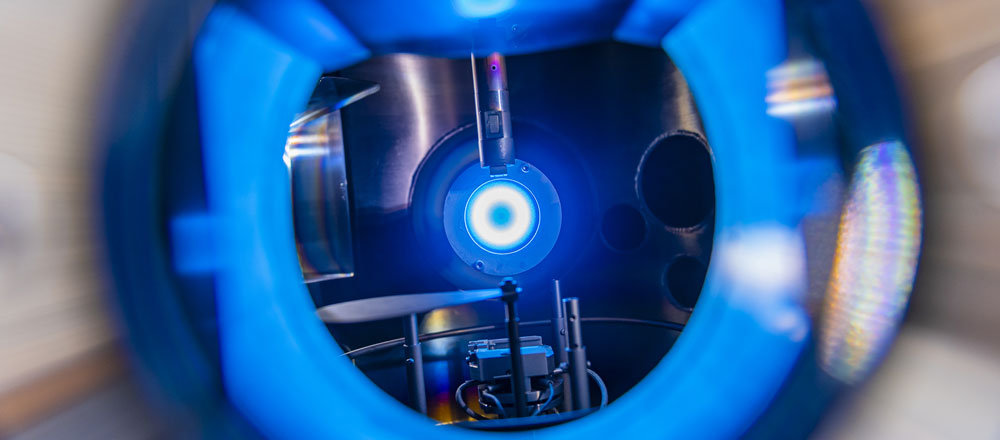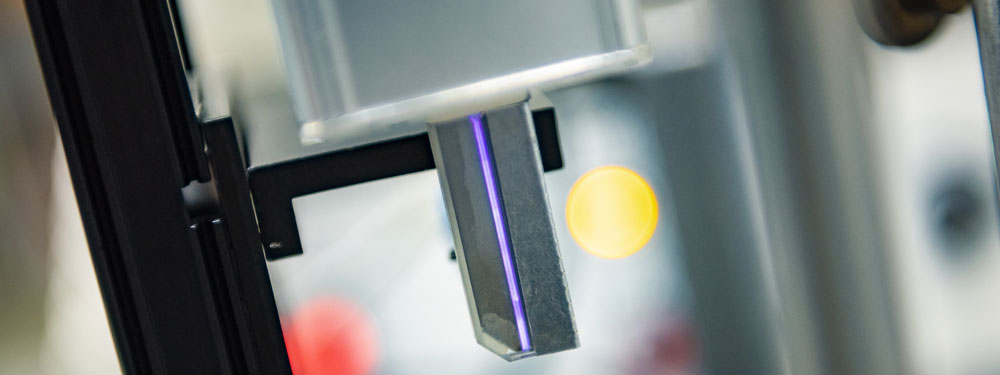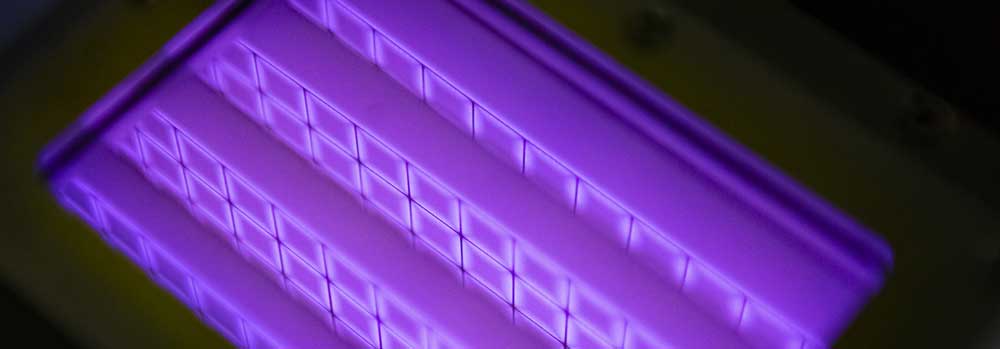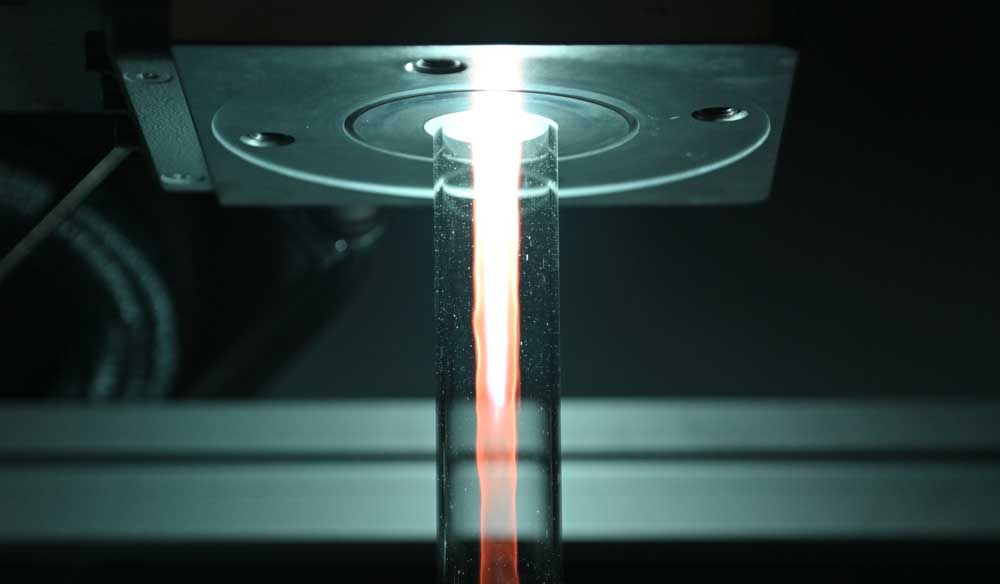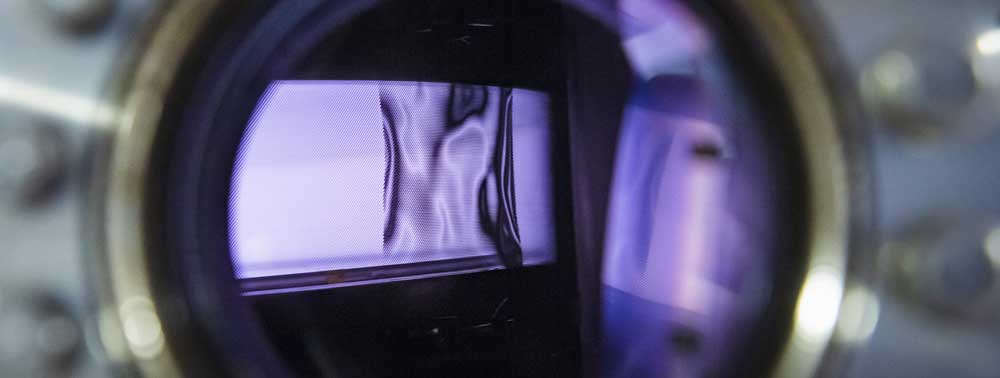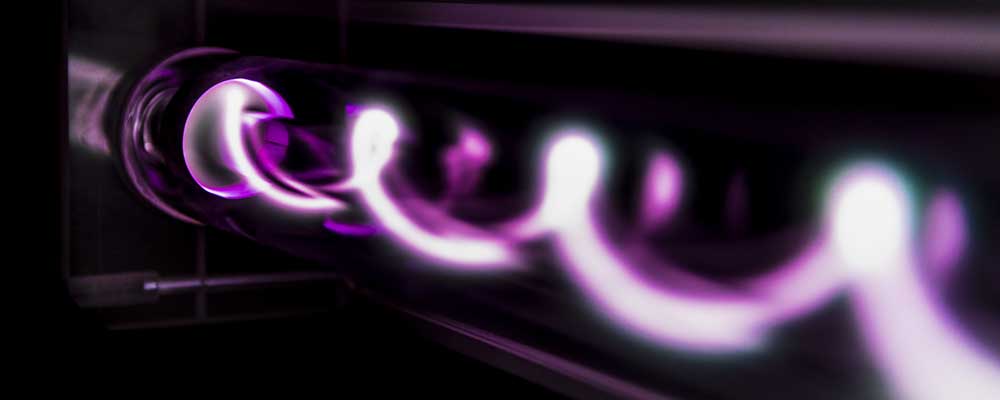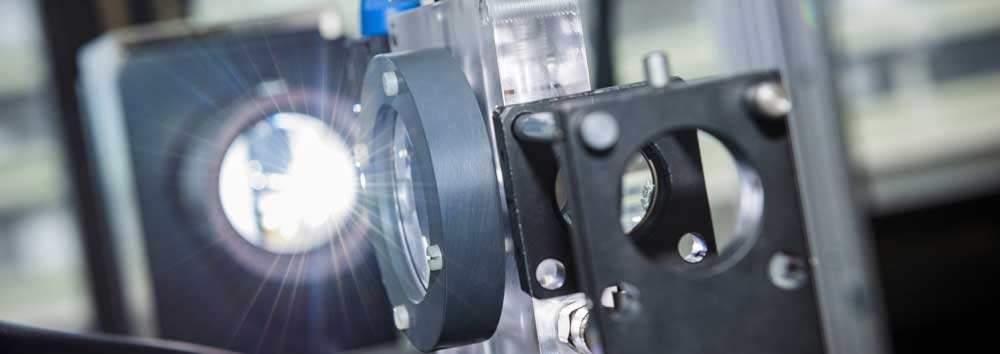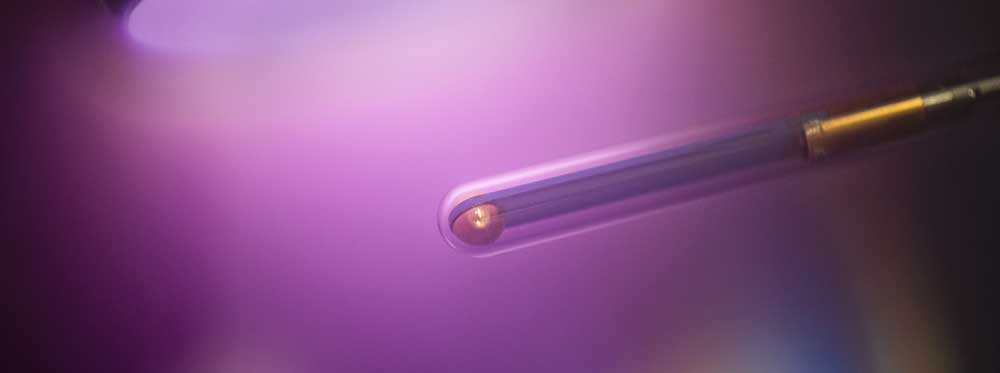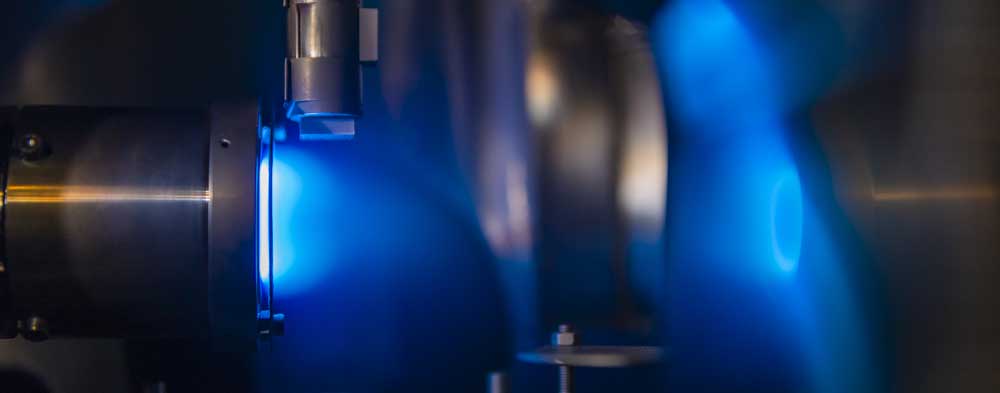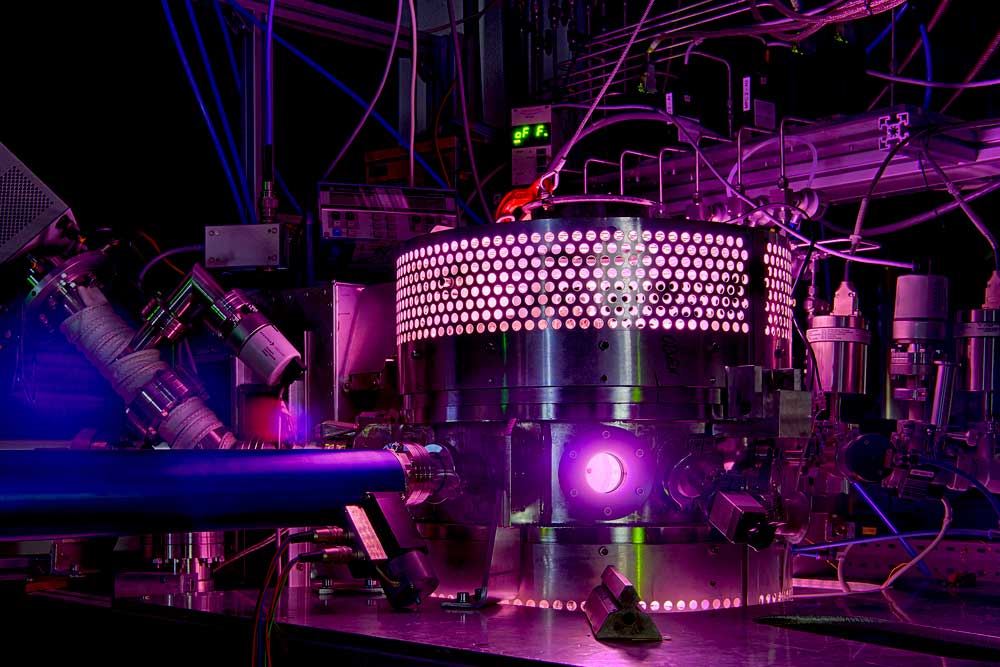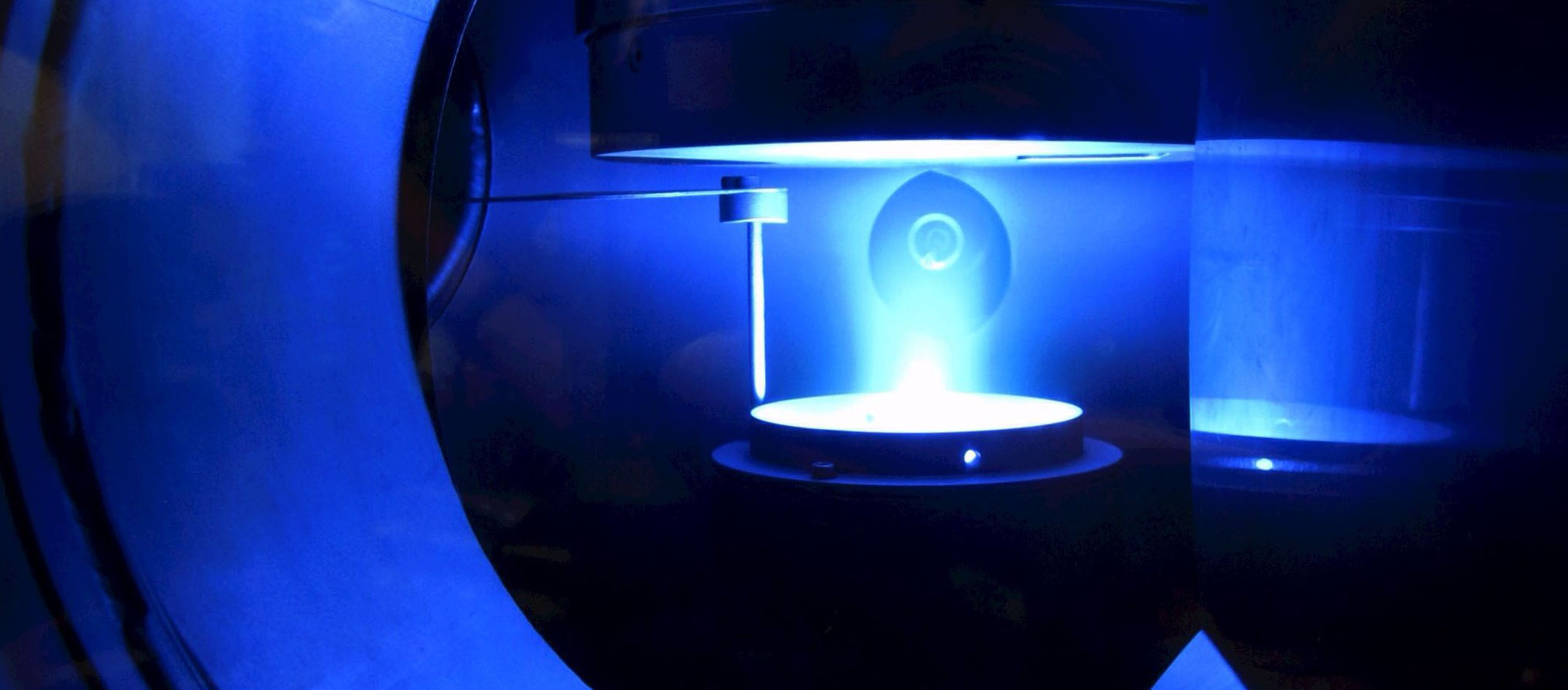Purple flashes on the skin
Cold plasma has an antimicrobial and anti-inflammatory effect. This has also been shown by studies at Ruhr University. Promising applications in medicine and cosmetics are now emerging.
Fine purple lightning flashes through the darkness of the laboratory. It crackles quietly. The flashes are generated inside a 12-by-12-centimeter plasma reactor. After just a few microseconds, the spectacle is over. "This is ionized, particularly high-energy gas or plasma. Most people are familiar with this colourful phenomenon from auroras, which are nothing more than gaseous plasma," says Dr. Friederike Kogelheide from the Chair of Applied Electrodynamics and Plasma Technology at Ruhr-Universität Bochum. "Plasma can be described as the fourth state of matter after solid, liquid and gaseous. There is thermal and non-thermal, i.e. cold plasma," Kogelheide continues like this. The electrical engineer dealt with the latter in her doctoral thesis. It is characterized by a particularly low temperature - at least in comparison to other plasmas, which can reach temperatures of several thousand degrees Celsius. "Cold plasma corresponds approximately to our body temperature, i.e. just over 30 degrees Celsius, and is therefore skin-friendly," explains Kogelheide. Kogelheide has studied the influence of cold plasma on human skin cells, or more precisely, its antimicrobial effect. Her research findings have also led to the founding of her start-up Glim Skin.
For around ten years, researchers in biology, chemistry, medicine and electrical engineering have been investigating the use of cold plasma in medicine. There is great promise here, particularly in the field of wound care and healing. "Studies like this have already shown that molecules produced by plasma, such as nitric oxide, can accelerate wound healing. The beneficial effect of cold plasma is also attributed to the ozone concentration and UV radiation in the plasma," explains Kogelheide. Another advantage of cold plasma is that it corresponds to the body's own temperature and can therefore be applied to human skin both painlessly and without contact. Great hopes are therefore being placed in plasma research.
Fighting resistant bacteria
In order to investigate the antimicrobial effect of cold plasma, the interdisciplinary research team in Bochum led by Kogelheide experimented with spores. "We mainly investigated the effect of plasma on so-called Bacillus subtilis spores. These bacteria are known to be particularly resistant; they can even survive in permafrost. They are therefore considered the gold standard in experiments," explains Kogelheide. The researchers' aim was to specifically reduce and completely kill the spores using cold plasma.
We proceeded in small steps.
– Friederike Kogelheide
"We proceeded in small steps," like this," says Kogelheide. "Our main focus was on the biological substances and building blocks produced by the cold plasma, such as UV radiation, ozone concentration and nitrogen monoxide. How much of this does our plasma produce? Do the spores continue to grow after treatment with plasma? What dose destroys the spores? And what part does the ozone play in this?" Kogelheide's team repeatedly checked and changed the composition of the gas mixture, the treatment time and intensity. Measurements were made using emission and absorption spectroscopy.
The result: it was not the individual components, but only the interaction of ozone, UV radiation and nitrogen monoxide that led to the inactivation of the spores. "The individual components alone had no effect. This is because the substances form a synergy. Another interesting finding was that a natural humidity of around 45 percent relative humidity promoted inactivation," explains Kogelheide.
Lower risk of infection
With their findings, the Bochum researchers have once again provided proof that cold plasma has an antimicrobial effect. They were also able to confirm that plasma produces nitric oxide, which can close wounds. "If we could replace wound healing creams with plasma treatment in the near future, that would be a huge advantage," says Kogelheide. This is because cold plasma can be applied without contact. "In contrast to creams, the risk of infection is significantly lower with plasma applications," explains the scientist.
Plasma flashes in hospital
Anti-inflammatory, wound-healing, antimicrobial: even though plasma research is still in its infancy, promising areas of application are already emerging. "Companies are already waiting in the wings to invest capital in the approval of plasma-based medical products by health insurance companies," observes Kogelheide. At some point, it may be a matter of course that the purple plasma flashes will be flashing through all hospitals.
adapted from Lisa Bischoff (RUB)
